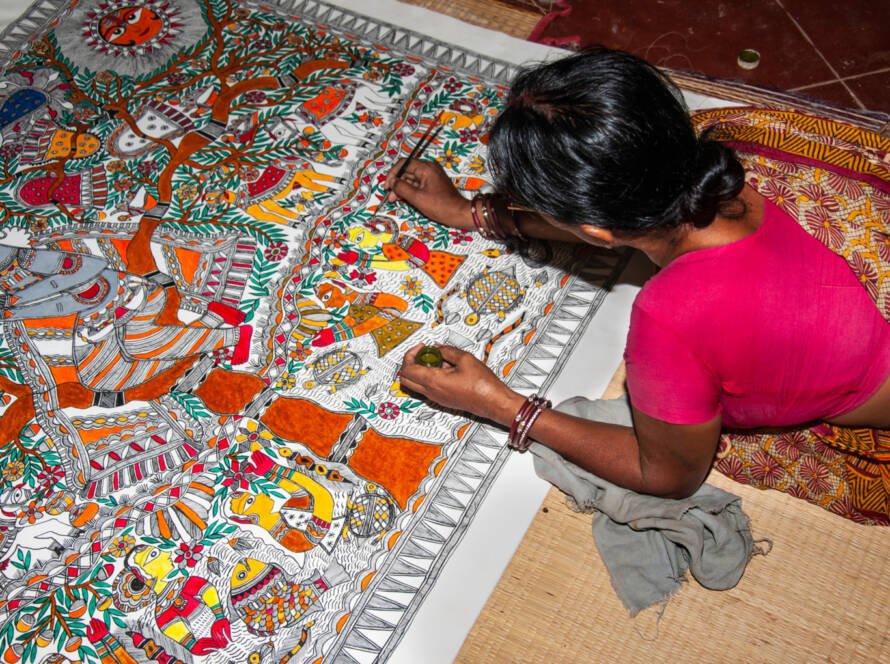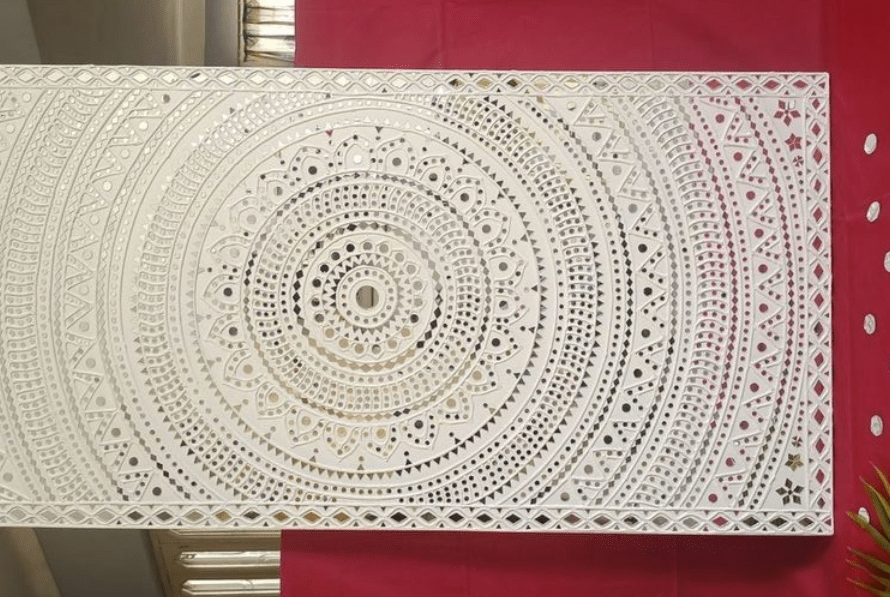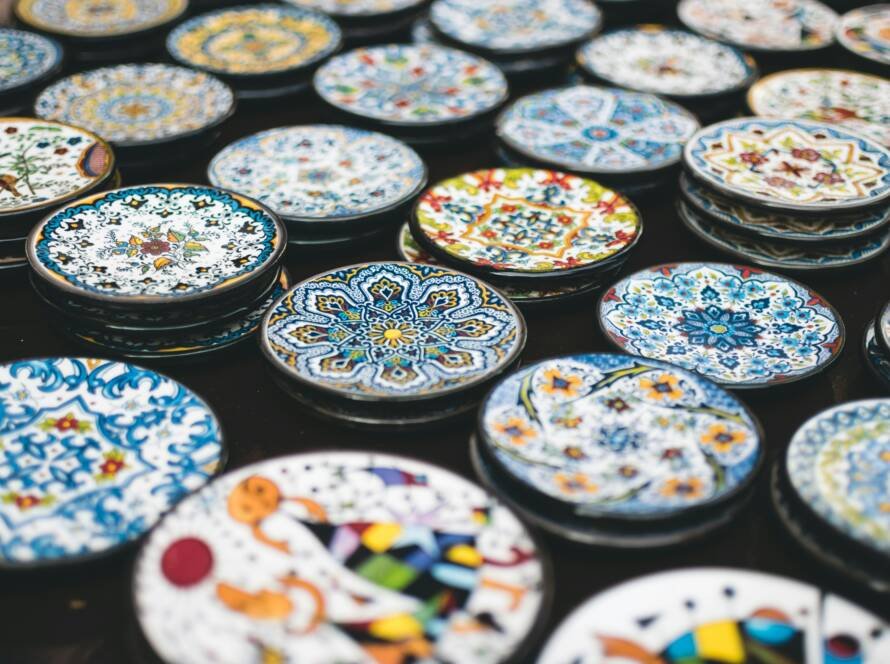Where Hands Create, Hearts Remember, and Culture Lives On
The First Touch of Colour – In a quiet courtyard where the earth smells of rain and the walls echo with stories of yore, a child dips their fingers into a bowl of natural dye—red from crushed hibiscus, yellow from turmeric, and green from neem. A line is drawn, tentative and curious. It’s not just the beginning of a picture—it’s the beginning of belonging.
Across generations and geographies, Indian art traditions have not merely been about aesthetics. They have been sacred bridges—connecting the inner self to the outer world, the old to the new, the individual to the collective. And when children engage with these traditions, they don’t just create—they remember.
Art as a Mirror of Culture and Character
From the bold strokes of Madhubani to the intricate detailing of Pattachitra, from the earthy rhythms of Warli to the vibrant storytelling of Gond, each art form in India holds a world within—a way of life, a way of seeing, and a way of being. These are not just drawings on paper or cloth—they are moral codes, rituals in colour, and philosophies in form.
Children who engage with these art traditions imbibe more than technique. They inherit patience from repetitive patterns, respect from ancestral motifs, imagination from mythological narratives, and collaboration from community-driven practices. Every dot and curve becomes a lesson in mindfulness. Every story retold becomes a whisper from the past, anchoring the child in a heritage rich with meaning.
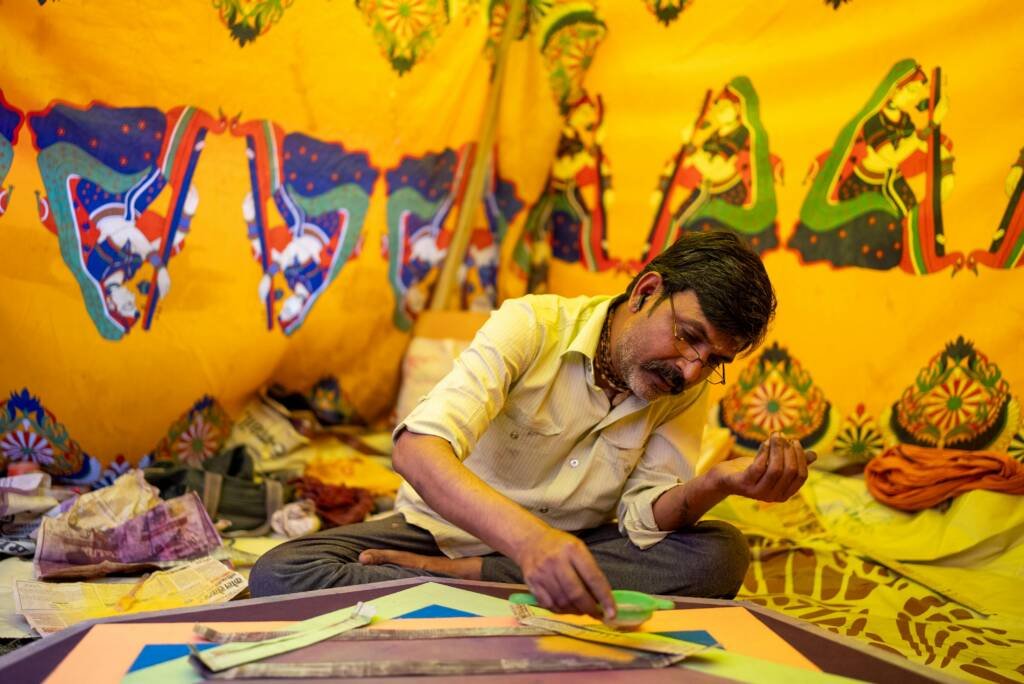
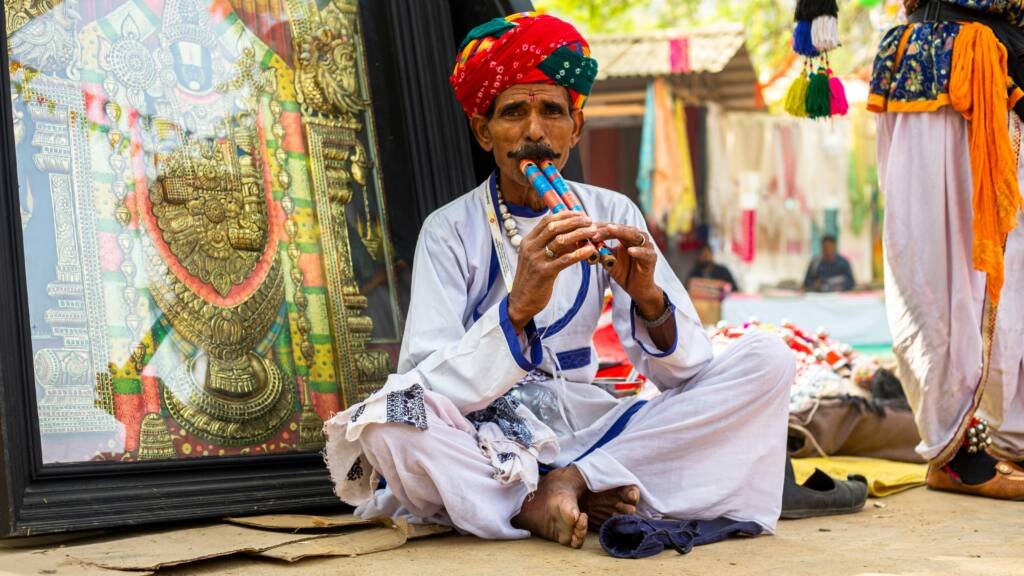
Stories in Every Stroke
What makes Indian art so profoundly empowering is its accessibility. These traditions were never confined to elite galleries—they were drawn on mud walls, temple ceilings, palm leaves, and sarees. Children don’t need fancy tools or formal training; they need a story, a space, and the freedom to listen with their hands.
As they recreate Krishna’s playful dances in Kalamkari, or the forest tales in Sanjhi, they begin to see the world not just through the lens of textbooks but through the eyes of ancestors who believed that divinity could be found in daily life. Art becomes a medium not only of self-expression but of self-discovery.
Cultural Roots and Wings of Confidence
In a globalised world where identities often blur, art can be the compass that helps children find their true north. Indian art traditions, rooted deeply in our soil, give children a sense of cultural identity that is both grounding and uplifting. When children learn that their doodles echo centuries of tradition, they begin to take pride—not only in their creations but in their culture.
More than ever, children need to feel seen and rooted. Indian art does this gently. It teaches them that their heritage is not a relic of the past but a living, breathing part of who they are. It reminds them that creativity is not imported—it is inherited.
A Canvas of Possibility
To teach children Indian art is not to impose rules but to open doors—to imagination, empathy, and emotional resilience. In these traditions, children find a rhythm that is ancient yet alive, structured yet liberating. They learn to create, to connect, and most importantly, to care—about their roots, their communities, and their own inner worlds.
In every rangoli laid at dawn, every painted tribal tale, every embroidered story passed down through a grandmother’s fingers, there is a quiet revolution. One that doesn’t just preserve culture, but empowers the young to live it with pride and purpose.
Let us offer our children not just a canvas, but a legacy. Let them paint with the wisdom of centuries and colour their futures with the brilliance of their own roots.
#IndianArtTraditions #EmpoweringThroughArt #CulturalRoots #ExperientialLearning #ArtAsStorytelling #CurricultureIndia

